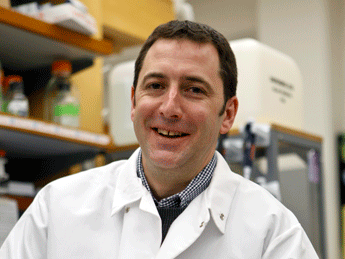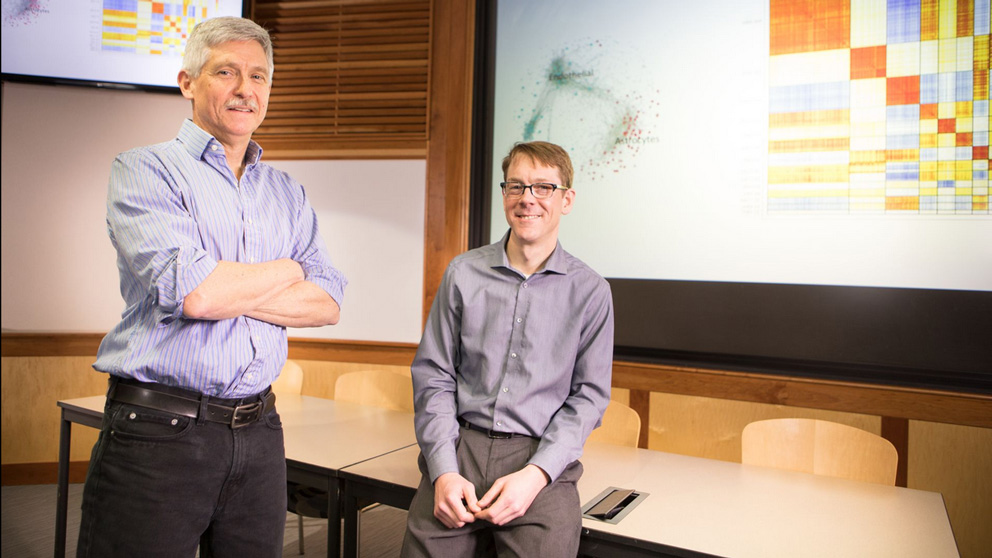Updated 3/20/2020 11:58:14 AM
Alzheimer's disease wreaks human devastation beyond calculation: robbing people of their memories, their ability to recognize loved ones, and (in some cases) even their personalities. The statistics are grim: About 5.4 million Americans are living with Alzheimer's disease, and the Alzheimer's Association projects that number to grow to 13.8 million by 2050.
Beyond the human cost, the impact on the economy is enormous as well. This year about $236 billion in this country will be spent on care for Alzheimer's patients, with another estimated $221 billion representing the economic value of family members' unpaid care.
Still worse, not one drug can prevent or treat the disease itself, and the cost to bring a new drug to market (according to a report by the Tufts Center for the Study of Drug Development) is $2.6 billion. With all this said, it may seem like good news about Alzheimer's research is hard to come by, but there is hope in the form of the humble mouse.
The hope of the mouse model
One of the most substantial grants the National Institute on Aging (NIA) awarded in 2017 was $25 million over five years to The Jackson Laboratory (JAX) and Indiana University (IU). This grant, being used to develop research mouse models, could deliver new treatments for Alzheimer's disease.
When asked about these new treatments, JAX Associate Professor Gregory Carter, Ph.D.Develops computational strategies using genetic data to understand complex genetic systems involving multiple genes and environmental factors.Gregory Carter, Ph.D. notes that one of the difficulties in diagnosing and treating Alzheimer's is that “most of the symptoms of the disease are behavioral, and they don't appear until there's already damage to the brain. If we could identify new early biomarkers that could be used to diagnose Alzheimer's at an earlier age, we might be able to arrest or reverse the damage at an earlier time point."

"For the first time, we have the tools to build new mouse models that truly represent patients with Alzheimer's disease," says Carter. He goes on to say that, as one of the principal investigators of the Center for Model Organism Development and Evaluation for Late-Onset AD (MODEL-AD), "Our goal is to break the bottleneck of Alzheimer's drug development."
How can genetic models of the mouse help?
For more than 100 years, scientists have studied mice to understand the genetic basis for human diseases. Because 98% of mouse genes are similar to those in humans, a mouse with a genetic variation that mirrors one in human patients can serve as an experimental model. In other words, by testing for related variables in mice, we can see how treatments will work in humans. This line of research can save time, money, and (eventually) human lives.
In the 1980's, gene transfer technology allowed scientists to engineer changes in the mouse genome to create transgenic models of human disease, in which an exact copy of the human gene is expressed in the mouse. Today, gene-editing technologies such as What is CRISPR?CRISPR stands for Clustered Regularly Interspaced Short Palindromic Repeats.CRISPR enable even more precise model-building.
Mice and Alzheimer's research
The first Alzheimer's disease mouse models carried a genetic mutation associated with a relatively rare, early-onset version of the disease. But most Alzheimer's patients have the late-onset version of the disease, which has not been successfully modeled in mice yet.
JAX Associate Professor and Alzheimer's disease researcher Gareth Howell, Ph.D.Applies genetics and genomics approaches to study age-related neurodegeneration associated with Alzheimer’s disease, dementia and glaucoma.Gareth Howell, Ph.D. , a co-principal investigator of the Alzheimer's disease center grant, comments, "There have been more than 400 unsuccessful clinical trials for Alzheimer's disease since 2004. Some of those were based on research using mouse models. Unfortunately, although those models have been fantastic to teach us about the biology of Alzheimer's disease, they haven't been appropriate as preclinical models."
Howell goes on to say that the MODEL-AD center is using these unsuccessful trials to zero in on how Alzheimer's attacks the brain. And luckily, they have help.

The MODEL-AD center is a partnership of JAX and Indiana University (IU), including co-principal investigators Bruce Lamb, Ph.D., whose work includes understanding the role of the immune system in Alzheimer's disease, and biomedical imaging expert Paul Territo, Ph.D.
"Our center also includes individuals that are seeing Alzheimer's disease patients," Howell says, "to individuals that are assessing mouse models. We've never had access to this level of data before." This data may become vital in attacking Alzheimer's, particularly for finding the specific avenues of treatment that weren't as obvious before.
All in all, notes Michael Sasner, Ph.D.Focuses on creating and characterizing mouse models that accurately model human disease and therefore can be used to understand neurodegenerative disease and be used in the development of new therapies.Michael Sasner, Ph.D. , a JAX expert in mouse model development and the MODEL-AD center co-manager, a key goal of the center is to put new and better mouse models of the disease in the hands of researchers worldwide.
Mouse testing available for all researchers
"Right now the Alzheimer's field is very limited by the available Alzheimer's disease mouse models," Sasner says. "We know that mouse models will be important for developing and testing new drugs. Once we generate and validate new models of late-onset Alzheimer's disease, JAX will make them widely available so that anyone in the pharma and biotech industries, as well as academic research, can use them as well as the data and associated protocols that we will provide about them."
By making the mice models and associated information widely available, JAX is exercising its philosophy of an open flow of information, allowing anyone to be able to join in the fight against Alzheimer's by using the powerful mouse model. Through breeding a wide variety of mouse models, JAX provides researchers with a wide range of options to test.

As Sasner puts it, "Aging is the greatest risk factor for Alzheimer's disease, and in previous iterations of mouse models that hasn't been fully appreciated. JAX has a long history in aging research, and we're putting these Alzheimer's disease genetic variants in the context of aging and really beginning to understand the interplay between genetic susceptibility and the aging process."
High tech mice
Besides newer mice models, recent advances in genetic and imaging technologies have enabled a better understanding of Alzheimer's disease in humans as well. This technology also includes advanced, noninvasive imaging techniques, and genomic techniques that characterize the entire brain at a gene-by-gene level.
The MODEL-AD team is using these new technologies by looking at data from five year's worth of patients. Using these computational approaches, Carter explains, the team can determine which genetic variants might be the most relevant and predictive of Alzheimer's. From here, they develop an array of mice to test those specific variants.
"We're still learning about the pathologies that lead to full Alzheimer's disease," Carter says, "and our center and the models we create and share with the community will greatly expand that knowledge, and accelerate the translation of this basic research knowledge into realistic cures for Alzheimer's disease."
What is a mouse model?
The ability to model human disease in the mouse makes it such a valuable experimental system. Genetically and genomically, the human and the mouse are very similar.